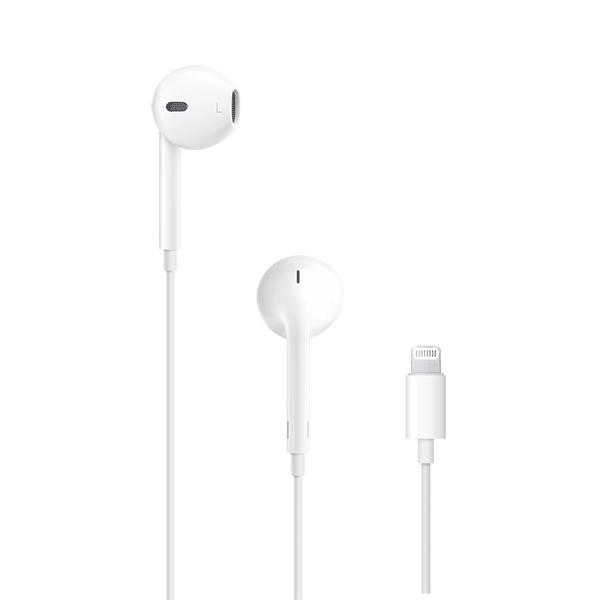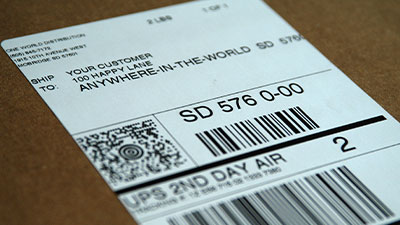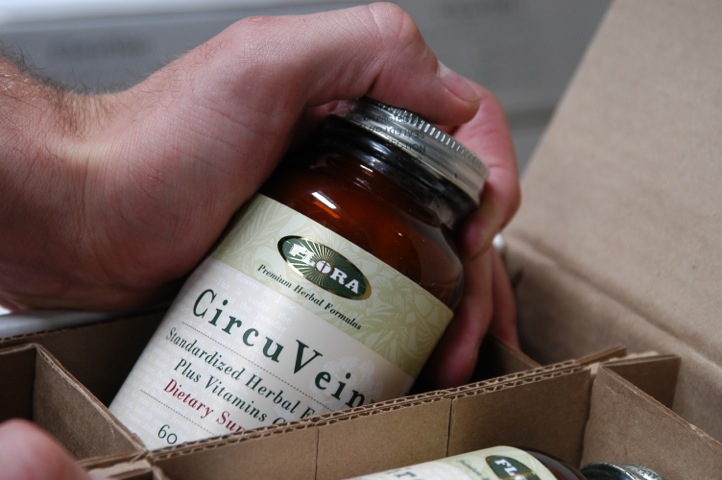What if your biggest cost-cutting opportunity isn’t overseas, but right here at home?
In 2025, smart ecommerce brands aren’t just chasing cheaper manufacturing; they’re bringing final assembly stateside. Why? Because it’s not just patriotic, it’s profitable. By assembling products in the U.S., companies are legally slashing tariffs, increasing margins, and offering a premium “Made in USA” appeal that sells.
It’s not about reshoring everything. It’s about rethinking the final step. And when you get that step right, you gain control, speed, and serious cost advantages in a volatile global trade environment.
This isn’t a loophole. It’s a blueprint.
Let’s break down how U.S. assembly is helping ecommerce brands future-proof their supply chains, outmaneuver tariffs, and turn fulfillment into a powerful profit lever.
How to Avoid Tariffs with U.S. Assembly
Brands looking to avoid tariffs with U.S. assembly are taking a smart, legal route that’s helped many ecommerce businesses keep more profit in their pockets. Instead of shipping fully finished goods from countries like China, which can trigger steep import duties, importing individual components or kits and then assembling them stateside opens the door to substantial savings.
Here’s how this works in practice:
1. Lower Duties on Components
Importing parts rather than whole products usually means paying much lower duties. For example, a finished electronic gadget from China might face a 25% tariff, but its separate circuit boards, casings, and chargers could enter at just 2–5%.
2. Change Tariff Classification
When you assemble those components in the U.S., you can often shift the item’s tariff classification. It’s no longer considered a Chinese-made finished product. It’s now a U.S.-assembled product, which often carries little or no import duty.
3. Flexible Supply Chain
By controlling final assembly here, you can make last-minute changes for compliance or customer requests without worrying about new tariffs.
Avoiding China import tariffs isn’t out of reach for smaller brands. With the right partners and processes, you can take advantage of these rules, turning what used to be a fixed cost into a flexible strategy for boosting your margin.
What Qualifies as Substantial Transformation?
When it comes to getting that “Made in USA” edge and lower tariffs, understanding substantial transformation is key. U.S. Customs uses this term to decide when a product’s country of origin changes, opening the door to made-in USA tariff reduction strategies.
Substantial transformation happens when imported parts or components are changed in the U.S. so much that the final item has a new name, character, or use. This process resets your product’s country of origin for customs purposes, helping you avoid extra duties tied to certain countries.
Here’s what typically counts as substantial transformation:
- Major assembly operations: Simple repackaging won’t cut it. Your U.S. team needs to do work that significantly changes the product, think assembling electronics, combining textiles into finished apparel, or turning hardware kits into ready-to-use tools.
- Creation of something new: If you import parts and assemble them into a finished product with a different function (like building e-bikes from imported motors and frames), you’re likely meeting the test.
- Documented process: Keep clear records showing how and where each step happens.
Not every change qualifies. Swapping labels or doing minor finishing work doesn’t usually change the country of origin. It pays to consult an expert or request a Customs ruling, such as the one found here, if you’re unsure how to change product country of origin for tariff savings.
Understanding these rules gives your brand a powerful lever: you can legally shift your product’s origin with smart U.S.-based assembly, turning compliance into real profit gains.
How U.S. Assembly Changes Country of Origin—and Tariff Exposure
One of the most strategic outcomes of domestic assembly is the potential to change your product’s country of origin, reducing your exposure to country-specific tariffs on goods from countries like China or Vietnam.
According to U.S. Customs and Border Protection (CBP), a product’s country of origin is determined by the location where it was “substantially transformed.” That means if your final assembly in the U.S. changes the name, character, or use of the imported components, the product may legally qualify as Made in USA—or at the very least, not from a high-tariff country.
Examples:
- Fully assembled smart home device imported from Vietnam = 46% tariff
- PCBs, enclosures, and batteries imported separately = 0–5% tariff
- Product assembled, tested, and packaged in U.S. = Avoids 46% tariff and may qualify as U.S.-origin
Pro Tip:
Document everything. CBP may require clear records showing the assembly process to approve country-of-origin changes.
What Is the CBP’s Substantial Transformation Rule and Why It Matters
To determine if your assembled product qualifies for a new country of origin (and potentially avoids high tariffs), CBP applies the “substantial transformation” test. This rule examines whether the product has undergone a significant change in name, character, or end-use during U.S. assembly.
Qualifies:
- Programming or wiring electronics
- Assembling multiple components into a new functional product
- Adding unique customization or branding during final build
Doesn’t qualify:
- Minor assembly (e.g., just screwing parts together)
- Labeling, repackaging, or simple finishing steps
Bottom Line: If your U.S. assembly process materially alters the function or identity of the product, you may legally change its country of origin.
The Role of Tariff Engineering in Lowering Duties Through Domestic Assembly
Tariff engineering is a tactical approach brands use to lower tariffs through smart product design and supply chain planning. By understanding the rules behind tariff classifications, you can make choices during assembly that put your products in a lower-duty category.
How does this work in practice?
- Import individual components or unfinished goods, which often carry much lower tariff rates than fully finished products.
- Complete the final assembly in the U.S., transforming those parts into a finished product.
- The act of assembling products domestically can legally shift the tariff classification under U.S. Customs rules, dropping your duty bill significantly.
For example: An electronics brand imports circuit boards and casings separately. Assembling these parts in an American facility means you pay the component rate (usually much less) instead of the higher finished-goods rate.
Key profit-driving benefits:
- Lower duties—sometimes by 20% or more depending on your product category
- Increased flexibility—adjust your assembly process as trade policies change
- Better compliance—reduce risks of misclassification penalties
Brands using tariff engineering with U.S. assembly are saving money and staying nimble. When trade regulations shift, you have options at your fingertips, not handcuffs. This is how assembling products in the U.S. can slash tariffs and boost profit margins while keeping your business ready for whatever comes next.
Understanding HTS Codes and Tariff Engineering Tactics
When planning to assemble products in the U.S., it’s essential to understand how HTS (Harmonized Tariff Schedule) codes affect your bottom line. Products are classified under specific codes that determine the duty rate.
This is where tariff engineering becomes a powerful tool. Instead of importing a product that falls under a high-duty HTS code, brands are importing components that fall under lower-duty codes, assembling them domestically, and legally avoiding the higher tariff.
Smart tariff engineering strategy:
- Classify imported components under lower-duty HTS codes
- Assemble domestically using those components
- Claim new HTS code based on the finished product
- Reduce or eliminate tariffs
Beware:
- Some HTS codes are narrowly defined—ensure correct classification
- Cost savings can vanish without efficient assembly partners
- Marketing products as Made in USA requires strict compliance with FTC guidelines
Supply Chain Advantages Beyond Tariff Reduction With Domestic Assembly
Assembling imported components in the USA isn’t just about how to reduce import tariffs in 2025 or avoid tariffs with U.S. assembly. The real upside goes deeper into your day-to-day supply chain operations. When you localize the final steps of production stateside, you unlock benefits that bring both speed and control.
Key profit-driving advantages include:
- Faster Customs Clearance: Importing parts instead of finished goods often means clearing customs with less scrutiny and fewer delays. Components are typically subject to simpler inspections, letting your products hit the market sooner.
- Greater Inventory Flexibility: You can keep core components in bulk in a U.S. facility and assemble to order (or even customize) based on real-time demand. This reduces the risk of dead stock and lets you respond instantly to shifts in customer preferences.
- Easier Quality Control: Checking product quality during final assembly on U.S. soil means issues get caught before shipping out to customers, protecting both your brand reputation and your bottom line.
- Reduced Shipping Costs on Returns: Handling returns domestically helps avoid costly international shipping fees and simplifies restocking or refurbishment.
Profit tip: Localizing critical production steps often shortens lead times, cuts down on air freight expenses for rush orders, and positions your brand as agile in a volatile market.
How does One World Direct support brands with these strategies?
Combining U.S. assembly tariff benefits with OWD’s personalized-to-consumer fulfillment gives your brand a competitive advantage. By using tariff engineering—importing components, assembling domestically, and meeting substantial transformation rules—you can reduce import duties, manage your landed costs, and create a “Made in USA” appeal. Adding Personalized-to-Consumer (P2C) fulfillment after the assembly stage not only helps you save on tariffs but also boosts customer loyalty and allows you to charge higher prices.
Here’s how to seize this advantage:
- Structure your supply chain for U.S. assembly to optimize HTS classifications.
- Layer on customer-centric P2C features like engraving, embroidery, or custom packaging.
- Work with a 3PL like OWD that specializes in both compliance and high-touch fulfillment.
Trade rules will continue to change. Brands that remain flexible by combining effective tariff strategies with unforgettable customer experiences will surpass their competitors. Are you ready to transform fulfillment from a cost center into a profit driver? Contact OWD for customized solutions that help your ecommerce brand succeed in any trade environment.
FAQs About Assembling Products in the U.S. to Slash Tariffs and Boost Margins
How does domestic assembly impact landed cost calculations?
Domestic assembly can positively affect landed cost calculations by reducing tariffs on imported components versus fully assembled goods. This often leads to lower overall costs, including shipping and handling fees, due to streamlined logistics within U.S. borders.
Can all products benefit from assembling in the U.S., and which categories see the biggest gains?
While many products can benefit from U.S. assembly, categories with high import tariffs on finished goods, such as electronics, apparel, and consumer goods, see the most significant advantages. By shifting final assembly to the U.S., brands can reduce import duties substantially and leverage 'Made in USA' labeling to boost market appeal.
Is assembling products in the U.S. cost-effective for small-to-midsize ecommerce brands?
Yes, assembling in the U.S. can be cost-effective for small-to-midsize ecommerce brands by minimizing tariff expenses through tariff engineering. This approach enhances product value and customer satisfaction while improving profit margins despite potentially higher labor costs.
What documentation is required when claiming a product is 'assembled in USA' to benefit from tariff reductions?
Businesses must provide evidence of substantial transformation under U.S. Customs law, including detailed records of assembly processes, sourcing of components, and compliance certifications. Proper documentation ensures eligibility for tariff benefits and supports accurate country of origin claims.
How can tariff engineering strategies help in lowering duties through domestic assembly?
Tariff engineering involves designing products or structuring supply chains so that imported components qualify for lower duty classifications. By performing final assembly in the U.S., businesses can alter the product's country of origin designation, thereby reducing applicable tariffs while maintaining product quality.
What are the supply chain advantages beyond tariff reduction when assembling imported components domestically?
Beyond tariff savings, domestic assembly offers faster customs clearance, improved inventory control, quicker market responsiveness, and enhanced ability to offer personalized or customized products. These benefits contribute to greater operational efficiency and stronger competitive positioning in the marketplace.




